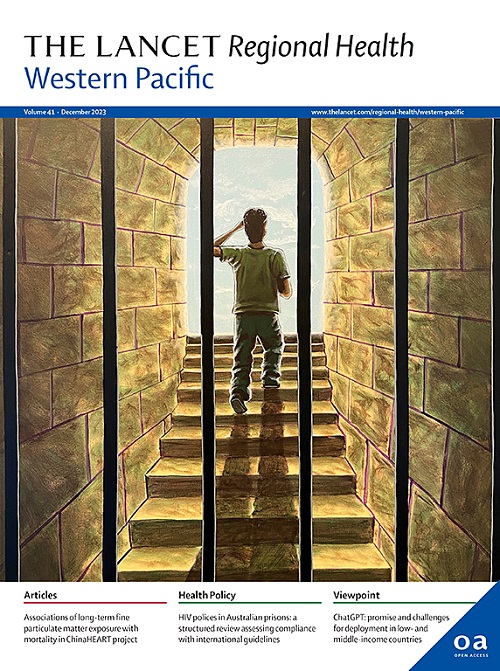National age-specific mortality trends for breast cancer from 2009 to 2021 and the surge age in China
IF 7.6
1区 医学
Q1 HEALTH CARE SCIENCES & SERVICES
引用次数: 0
Abstract
Background
The age-specific mortality temporal trends of breast cancer can compare differences across subgroups and determine the surge age of mortality rates. We aim to assess the surge of mortality by age for breast cancer in China.
Methods
We extracted mortality data of women aged 20-84 years by 5-year intervals and region (eastern, central and western) from 2009 to 2021 for breast cancer (ICD-10: C50) from China’s National Disease Surveillance Points (DSP) system. We assessed temporal trends in overall and age-specific mortality rates for breast cancer using log-linear Joinpoint models and estimated slope to determine the acceleration of mortality rate by age using linear Joinpoint models with three joinpoints to identify the mortality surge age range.
Findings
From 2009 to 2021, the mortality rates of breast cancer were 9.95 per 100,000 women in 2009, 8.78 per 100,000 women in 2013, 10.11 per 100,000 women in 2017, 10.00 per 100,000 women in 2021 in China, presenting a stable trend (average annual percent change, AAPC: 0%, 95% confidence interval: −1.0% to 1.0%). The pooled mortality rate was 9.76 per 100,000 women from 2009-2021. Temporal trends showed that the years 2013 and 2017 were significant Joinpoints for stratified analysis by period with APCs of − 2.6% (95% CI − 4.4 to − 0.8, P = 0.015) during 2009–2013, 2.8% (95% CI − 0.2 to 5.9, P = 0.06) during 2013–2017, and − 0.2% (95% CI − 2.1 to 1.6, P = 0.75) during 2017–2021, respectively. Joinpoint regression shapes four segments for mortality rate trends by age group and we observed a difference in mortality velocity pattern. The accelerations of breast cancer mortality rates by segment were 4.31 per 100,000 women (segment 2, 35-39 to 50-54, ranks 1st), 2.16 per 100,000 women (segment 4, 65-69 to 80-84, ranks 2nd), 1.40 per 100,000 women (segment 3, 50-54 to 65-69, ranks 3rd), 0.94 per 100,000 women (segment 1, 20-24 to 35-39, ranks 4th). Stratifying by time-period and region, we found that the highest mortality acceleration for breast cancer mainly showed in segment 2, namely 35-39 to 50-54 years.
Interpretation
This study investigates the temporal trends in overall and age-specific mortality rates of breast cancer from 2009 to 2021 in China. We propose that the mortality rates of breast cancer were stable in the past decade and the increasing trend of breast cancer mortality with age group can be divided into 4 segments, and the major mortality surge age is stable at 35-54 years across time-period and regions. Previous studies have demonstrated that national breast cancer screening programs can lead to a reduction in mortality rates after a period of implementation. This is attributed to the early detection and treatment of breast cancer, which enhances the chances of successful intervention and improves survival rates. Despite significant government investment in breast cancer screening, national coverage rates remain low and need to be improved. Women ages 35-54 years are a major population of concern for mortality up-trending.
求助全文
约1分钟内获得全文
求助全文
来源期刊

The Lancet Regional Health: Western Pacific
Medicine-Pediatrics, Perinatology and Child Health
CiteScore
8.80
自引率
2.80%
发文量
305
审稿时长
11 weeks
期刊介绍:
The Lancet Regional Health – Western Pacific, a gold open access journal, is an integral part of The Lancet's global initiative advocating for healthcare quality and access worldwide. It aims to advance clinical practice and health policy in the Western Pacific region, contributing to enhanced health outcomes. The journal publishes high-quality original research shedding light on clinical practice and health policy in the region. It also includes reviews, commentaries, and opinion pieces covering diverse regional health topics, such as infectious diseases, non-communicable diseases, child and adolescent health, maternal and reproductive health, aging health, mental health, the health workforce and systems, and health policy.
 求助内容:
求助内容: 应助结果提醒方式:
应助结果提醒方式:


